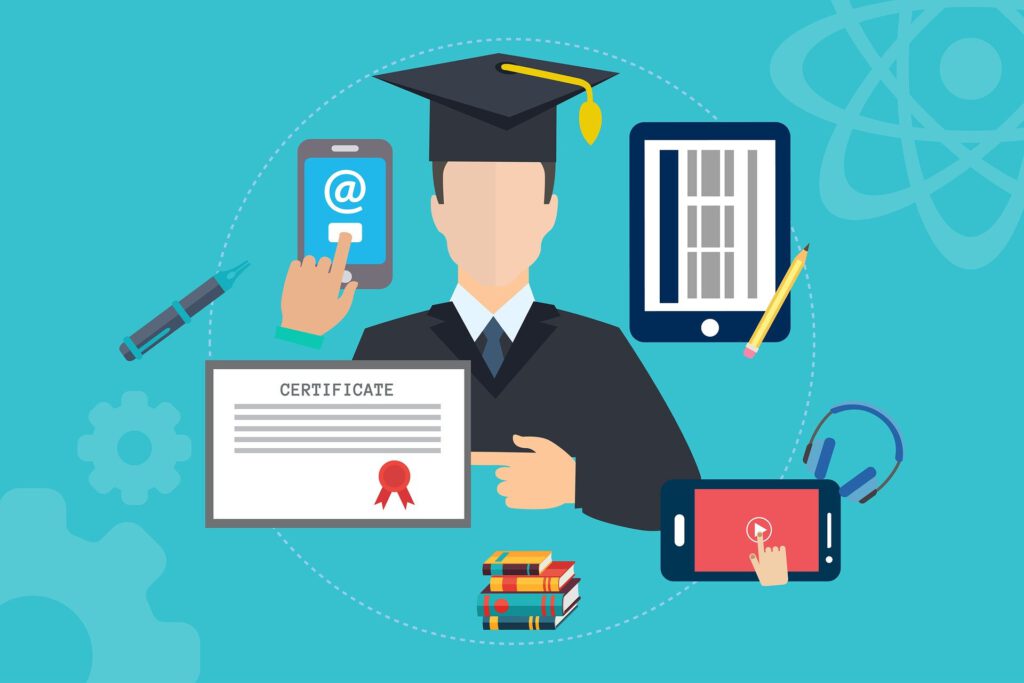How will new #EdTech innovations change the nature of education?

#FutureofEducations – Technology that is enhancing education
Classrooms are far more technologically advanced than they were ten years ago, and classic chalk and blackboard approach has been retired.
Unveiling the Education Technology strategy in April 2019, the UK government confirmed an investment of £10m to to support innovation and raise the bar in schools, colleges and universities across England.
So, how will this change the nature of education, and what kind of new innovations will become commonplace in the classroom? Join us as we look at what the future may hold for learning.
Cloud classrooms
The government looks set to develop a technological infrastructure for schools across the nation, allowing them to implement it into their own settings, and one of the key suggestions is for schools to utilise the ‘cloud’ approach. This will help to make learning materials readily available to students through a connected network of computer systems and creating ‘testbeds’, whereby schools can trial new innovations before they are rolled out on a wider scale. The teaching profession is notorious for having a heavy workload, and the government has identified technology as a potential avenue for removing five hours of workload per term, supported by an improvement in parental engagement. When these systems are fully embedded, part time or flexible working contracts could become a reality for teachers.
These developments have the potential to change the conventional approach to education, with less classroom hours for teachers and digital curriculums, accessible from any connected device anywhere. The possibilities would shape a new kind of classroom, which benefits from a less rigid learning structure with teachers who are not struggling to contend with excessive working hours. Building upon existing initiatives such as the use of Sprograms such as Skype and FaceTime, teaching on the go will be given a whole new dimension. One key introduction will be artificial intelligence- known commonly as AI, as it enables for the automation of many daily processes within schools. Over time, it will become increasingly personalised, meaning it could be a vital tool in grading and providing feedback for students. A further branch of this is machine learning, which will adapt to the individual requirements of students, and it could even go on to provide AI tutors. These forms of AI have already been developed on a small scale, and they can teach subjects such as mathematics and writing. As their use increases, they could also help to alleviate the workload of human teachers.
Lessons in VR
Another development that could take education by storm is simulation systems and virtual reality (VR), and these approaches are already in the trial stages in classrooms across the nation. In the past, teachers would take days away from the classroom to attend courses, but this can be avoided with VR. These simulations can replicate the setting by providing a sense of online community, where ideas and concepts are shared. The nature of these as an alternative to conventional courses can be more engaging, as they can be freely interacted with. The VR technology could also spell extinction for the traditional textbook, with the opportunity to use it to revisit points in history or to take field trips without leaving the classroom. Learning has transformed into an immersive experience, with the development of programs such as Google Expeditions, students enjoy deep sea excursions or visit the International Space Station. The simulation allows students to embrace their curiosity and ask more questions, from a first-hand perspective.
Biometrics
Some students had learned to swerve discipline and truancy tactics at school, but this could be a thing of the past soon with the introduction of biometrics. — perhaps much to students’ dismay! Biometric technology is most commonly used in activity trackers, but they can also prove valuable in getting the most out of the school day. Facilities such as fingerprint recognition and facial recognition scanners can help to cut down the time-consuming administrative processes, for example taking the class register and recording absences. There are also important safety requirements which can be enhanced using biometric data, by storing information on individuals who are allowed into the building and preventing anyone who is not recorded from entering.
All aspects of schools are becoming smarter, from visitor management to digital registers. Technology is playing a bigger role than ever in our children’s education, enhancing clarity in information and making teaching more efficient.











Responses